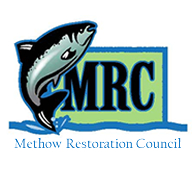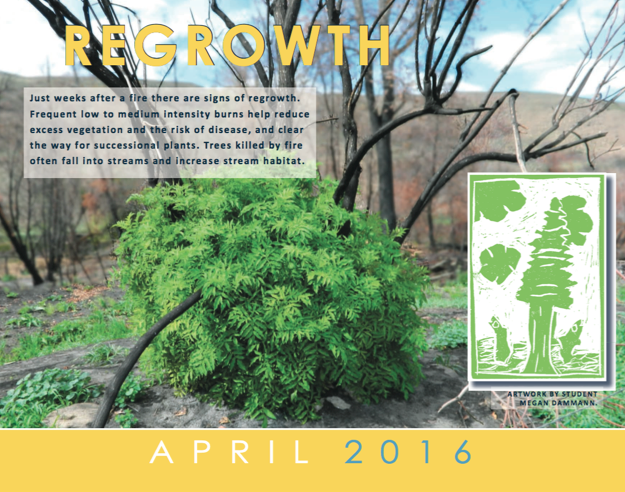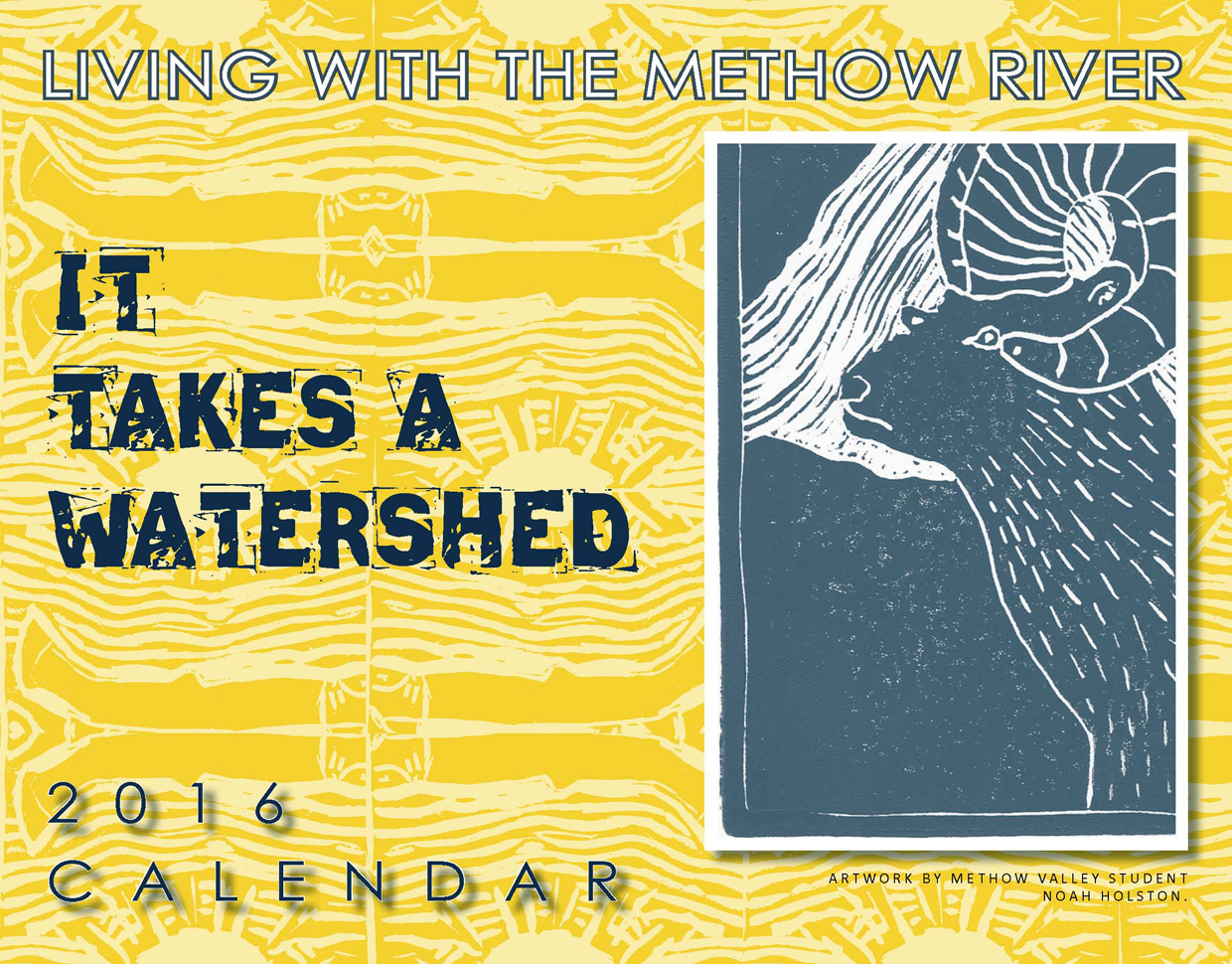

|
Living With the Methow River Monthly Activities and Learning Opportunities April 2016 
Because native plant species have adapted to the cycle of growth and fire, healthy riparian areas usually recover without human intervention. Burned trees with live roots will send up new shoots soon after the fire. The heat of the fire releases seeds from pinecones. Tree snags and burned brush continue to serve as habitat for birds, insects, and other plants until live vegetation takes their place. While the loss of shade warms creek water, the lack of vegetation to suck the water up leaves more water in the creeks to support fish during the low water period of late summer. Even post-fire landslides can be beneficial, as they add nutrients, gravel, and woody debris to the water. So, even though these watersheds may appear devastated, they will often grow back stronger than before if left alone. Grazed and cleared watersheds, including areas recently replanted, lack the root system required for a fast recovery. This delay allows invasive species such as Canada thistle and reed canary grass to take over. These invasive species outcompete native species and prevent the regrowth of trees and shrubs needed to shade the water. Human intervention may be required in these areas. For more information about the effects of fires, visit the US Forest Service Fire Effects site. (Looking for last month? Click here.) 
This year’s MRC calendar connects to ADVENTURES, ACTIVITIES AND INFORMATION tailored to each month. If you haven't gotten your calendar yet, you can download an electronic version here. Come back each month and find interactive activities, print outs, and suggested learning opportunities in our community.
Just follow the fish and engage in learning.
|
